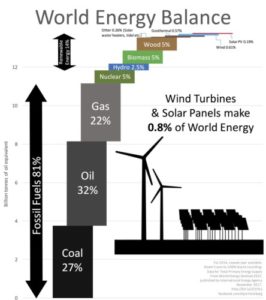by University of Leicester, May 9, 2018 in ScienceDaily
The research, published in Science Advances, suggests that early animals diversified within a climate similar to that in which the dinosaurs lived.
This interval in time is known for the ‘Cambrian explosion’, the time during which representatives of most of the major animal groups first appear in the fossil record. These include the first animals to produce shells, and it is these shelly fossils that the scientists used.
Data from the tiny fossil shells, and data from new climate model runs, show that high latitude (~65 °S) sea temperatures were in excess of 20 °C. This seems very hot, but it is similar to more recent, better understood, greenhouse climates like that of the Late Cretaceous Period.
(…)
by Ron Clutz, May 8, 2018 in ScienceMatters
Years ago, Dr. Roger Pielke Sr. explained why sea surface temperatures (SST) were the best indicator of heat content gained or lost from earth’s climate system. Enthalpy is the thermodynamic term for total heat content in a system, and humidity differences in air parcels affect enthalpy. Measuring water temperature directly avoids distorted impressions from air measurements. In addition, ocean covers 71% of the planet surface and thus dominates surface temperature estimates.
More recently, Dr. Ole Humlum reported from his research that air temperatures lag 2-3 months behind changes in SST. He also observed that changes in CO2 atmospheric concentrations lag behind SST by 11-12 months. This latter point is addressed in a previous post Who to Blame for Rising CO2?
by S. Graham, May 9, 2018 in ClimateChangeDispatch
World fund managers predict a fall in the value of oil companies. According to a survey published last month in the United Kingdom, climate change risks will force a lower valuation of oil company stock prices within the next five years.
But despite many predictions of demise over the last 50 years, global consumption of hydrocarbon energy continues to grow
(…)
We’ve heard this many times before. In his address to the nation on April 18, 1977, President Jimmy Carter stated, “…we could use up all the proven reserves of oil in the world by the end of the next decade.”

La géologie, une science plus que passionnante … et diverse

